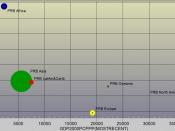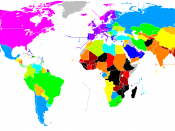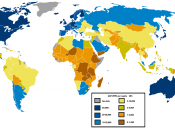The exchange rate is defined as the rate at which one currency can be converted into another. There are several methods to calculate and predict the exchange rate. This is due to different theories, data and econometric methods. However not all of these techniques are suitable to forecast the exchange rate. There are three key methods to get the exchange rate. These are the purchasing power parity (PPP), the interest rate parity and monetary approach. I'm going to explain each of these methods and state their potential problems. As examples i'll always use the US Dollar ($) and the Euro (â¬).
The purchasing power parity is the most basic technique to determine the exchange rate and is far more realistic than others although it is the building block of other exchange rate models. It is defined as a measurement which compares the average costs of goods and services relative to the value of money between two countries.
In other words representative baskets of commodities have the same price abroad and at home. The PPP is primarily based on the assumption of the "Law of one Price". This theory states that if there are no barriers to trade and transportation costs, the price of an identical good must sell for the same price in different countries as long as it is expressed in one currency. This is illustrated in the following equation: Pius= (E$/â¬) x (PiE) where Pius is the dollar price of good i sold in the US, PiE is the corresponding euro price in Europe and E$/⬠the exchange rate of Dollar/Euro. This is the absolute PPP which states that the exchange rate of two currencies (Dollar, Euro) equals the product of the average prices in two countries (P in the US, P in Europe). There is a...


